The product description is one of the most influential elements of the customers' purchase decision. Creating an effective product description is tricky. You only have a few words to make a sale. In this post, we’ll see how to write a product description to catch your customers’ attention and increase your sales.
What is a Product Description?
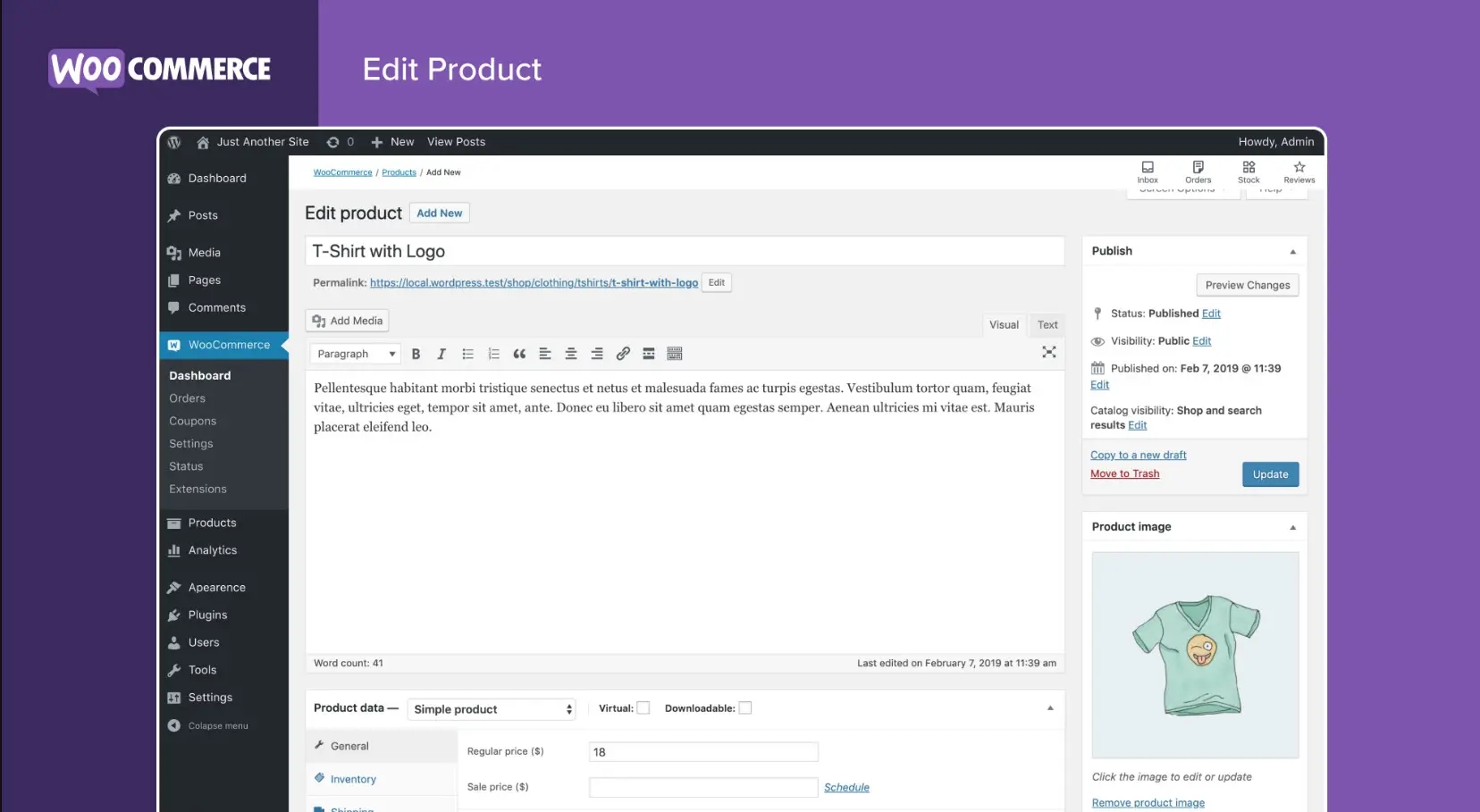
This image is the product description editor from WooCommerce, taken from https://wordpress.org/plugins/woocommerce/
A product description informs customers about a product. The purpose of the product description is to persuade customers to make a purchase. Product descriptions are a form of persuasive writing.
It works by showing the benefits and providing customers with the information they need to make a purchase decision. It shows them why they need the product and compels them to buy it. The focus is on the benefits of the product rather than the product itself.
A product description should inform the potential buyer of the product and persuade them to make a purchase. It should include the information they need to make their decision including details about the features, how it can be used, and the benefits of using the product. It should highlight the product’s value.
How to Write a Product Description
There are several key elements that a product description needs to have to be effective. If the description is well written, it will promote sales. If it’s poorly written, it can turn customers away, even if it’s a great product. Here’s how to write a product description to promote sales and make customers happy.
Write to Your Ideal Customer
To resonate with your customers, a product description should be written for a specific audience. If it’s written for a general audience, then it won’t focus on the needs of anyone specific and will not appeal to anyone. Without a specific audience, the description can appear vague.
Create a description of the product’s ideal customer. This is known as a persona. Focus on a group of people rather than a specific person. Describe their likes and dislikes, their needs, goals, education, etc. Decide the kinds of problems they have and think of how your product can help.
Once you have a detailed description of your ideal customer, speak directly to them using the product’s Unique Selling Points (USPs). Appeal to their needs and interests. Show how the product can help their needs and solve their specific problems. Anticipate their problems, questions, and concerns. Write to them as if you were in the room speaking with them. Use words that resonate and appeal to that audience.
Highlight the Benefits
Rather than focus on the features, customers want to know how the product can benefit them. They don’t want to look through a list of features that they have to decipher. Instead, they want to know if the product will solve their problem. Ask the question, how can my product make their lives better? Focus on the answer to that question.
Focus on how the product helps them. Show how they would benefit by using the product. Show the problems it will solve. Rather than focusing on the features, highlight the benefits of the features. Show how the benefits solve each problem. Focus on the experience instead of the product. Show how it can improve their lives.
For example, no one wants an air conditioner. They want the temperature in their home to be comfortable. When describing the air conditioner, the features are important but don’t focus on the features. Focus on how the air conditioner can help them keep their room comfortable. This will include features such as the BTU, thermostat, timer, and energy efficiency, the focus should be on how it keeps them cool without costing them too much.
Use Casual Language
For most product descriptions, it’s best to use casual language such as simple words, short sentences, and a conversational tone. This makes the description easier to understand. It also makes it easier to tell a story about the product, use a short case study, and include a testimonial.
Don’t use jargon or overly difficult words. Don’t use words that sound like you’re just trying to make a sell. You are trying to make a sale, but you’re also trying to help the customer. Address the customer as “you” and “your”. Use contractions. Make them feel as if you’re speaking to them.
When to Use Advertising Language
There are a few customer personas that advertisers focus on. It’s common to use specific advertising language when appealing to these personas. They use these personas to appeal to them specifically. We see them in commercials and ads. A few of them include:
Snob Appeal – Appeal to their desire to be exclusive and set apart from everyone else. Highlight that it’s luxurious, expensive, and a lifestyle brand.
Bandwagon – Many customers want to feel that they belong and are welcomed. They like to jump on a popular bandwagon to join in with everyone else. Use words that focus on their desire to belong and feel welcomed.
Emotional – Use their emotions to make them feel a connection to the product. Appeal to their joy, satisfaction, excitement, or Fear of Missing Out (FOMO).
Technical – Some customers want to dig into the technical specs to feel smart. Appeal to their desire to understand the technical details. Use technical jargon that makes them feel smart.
Thrifty – Some customers want to get the best deal or purchase the best product for the money. Appeal to their desire to be thrifty. Highlight the savings and the value.
Tell a Story
Telling your product’s story makes it more relatable. Tell the story of why your product was needed, how your product was created, the problems you faced while creating it, and how it has impacted those who’ve used it. The story could also include the mission of the company. This gives the customer a behind-the-scenes look at the product and company and makes the company feel more personal.
Avoid Being Generic
Don’t use generalizations and overused words. Don’t say that a product is “very good”. Generic words and phrases have no real meaning when it comes to a product the customer has never seen for themselves. Use words that are specific to your product and audience.
Use details that can help them picture themselves using the product. This helps them to understand what they’re buying and how they’ll use it. This helps them to understand why they need your product, and it builds trust in your brand and products.
Be Truthful and Realistic
It’s difficult to gain trust, but it’s easy to lose it. Once trust is lost, it’s even more difficult to build it up again. It’s important to build trust and keep it. Be honest about what a product can do.
Don’t promise that a product can do something it cannot. Don’t exaggerate to make it sound better than it is. Also, don’t make promises that don’t sound real, or are too good to be true.
Utilize Sensory and Tactile Language
Since customers can’t touch and hold the product, use language that allows them to imagine using their senses. Describe the product so they can imagine touching, holding, and using the product. Use descriptive words that customers understand that fit the product, such as warm, soft, fuzzy, cold, salty, etc. Choose words that they would recognize with a positive experience.
Focus on verbs that can help the customer imagine touching and feeling the product. Use language that shows how customers feel when they own the product. If customers can imagine the feeling of owning the product, they’re more likely to make the purchase.
Be Energetic and Contagious
Make buyers look forward to receiving the product. Use energetic and exciting words that would get them excited so they want to share the product with others.
Support Claims with Facts
When making claims, such as claiming your product is the best, be sure to support those claims with facts. Without facts to back up the claims, the claims can appear false. If a product is the best, fastest, easiest, etc., it should be easy to demonstrate that as a fact. If there are no facts to back up the claim, then it’s best not to make the claim. Another option is to provide a quote from a customer stating the claim as their opinion.
Include Social Proof
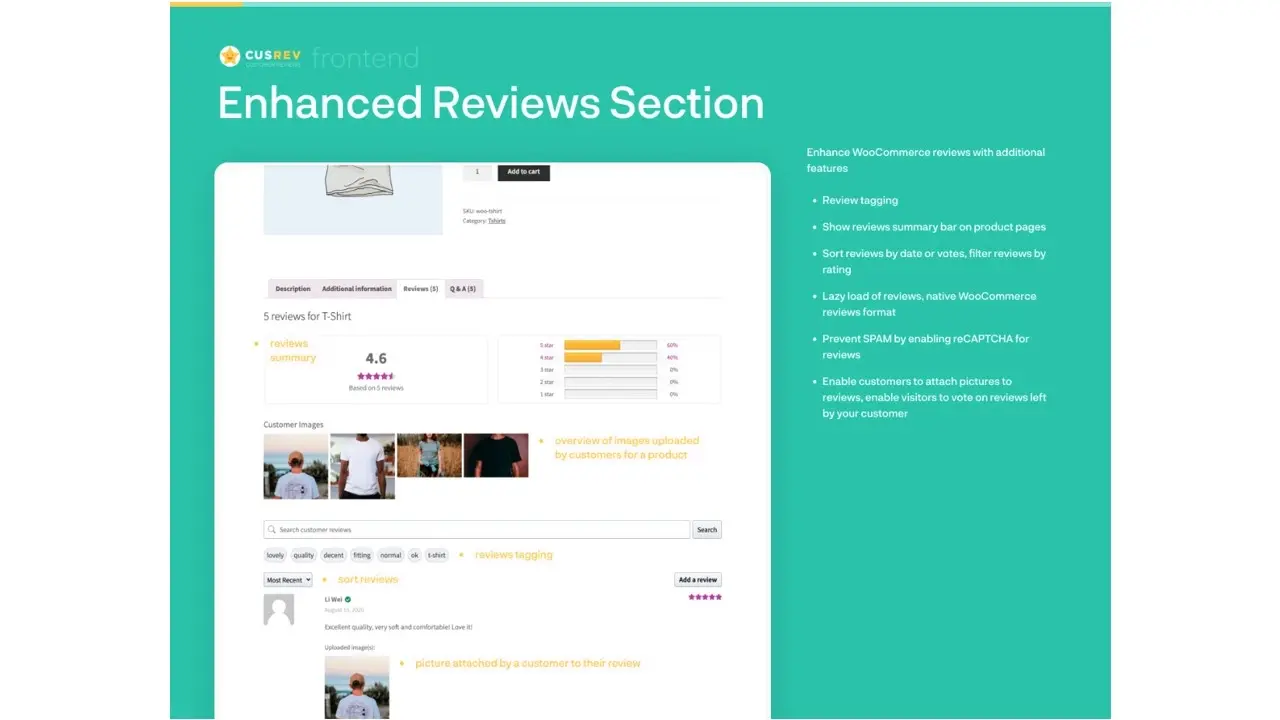
This image is from the Customer Reviews for WooCommerce plugin, taken from https://wordpress.org/plugins/customer-reviews-woocommerce/
Potential buyers often want to know what others think about your product. They want to know how others have used it, enjoyed using it, and how much they trust it. They want some reassurance that the product’s claims are trustworthy. Providing social proof is a great way to ensure potential buyers of the product’s claims.
Social proof can be added with customer reviews, comments, links to influencer reviews, quotes from influencer reviews, mentions in magazines, etc. It’s also a good idea to place the logos of media outlets that have showcased the product.
A great way to get reviews is to send an email asking customers to review the product the product once they’ve received it. Reviews and testimonials bring in a second opinion. If you haven’t sold enough to get reviews, you can send the product to magazines, newspapers, and influencers for reviews.
Make it Easy to Scan
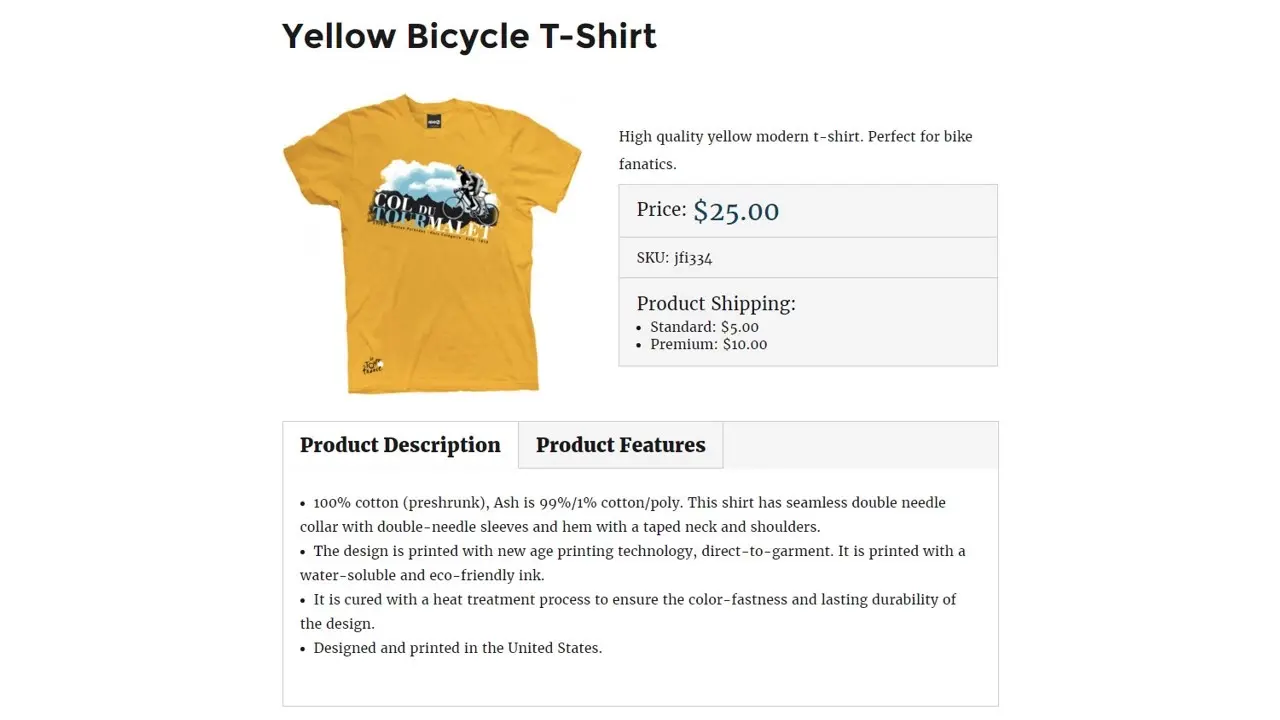
This image is from the eCommerce Product Catalog plugin, taken from https://wordpress.org/plugins/ecommerce-product-catalog/
Product descriptions can become long. Potential clients may not want to read through all of the information. They just want to see something specific or get an overall idea of what the product can do. Make it easy for them to use by dividing the text in a way that’s easy to scan.
Create sections and group information together. Using headings, icons, bullets, whitespace, images, and interactive elements such as accordions that the customer can open or close. Make it easy for them to understand the benefits, options, pricing, reviews, etc., all at a glance.
Include Images and Videos
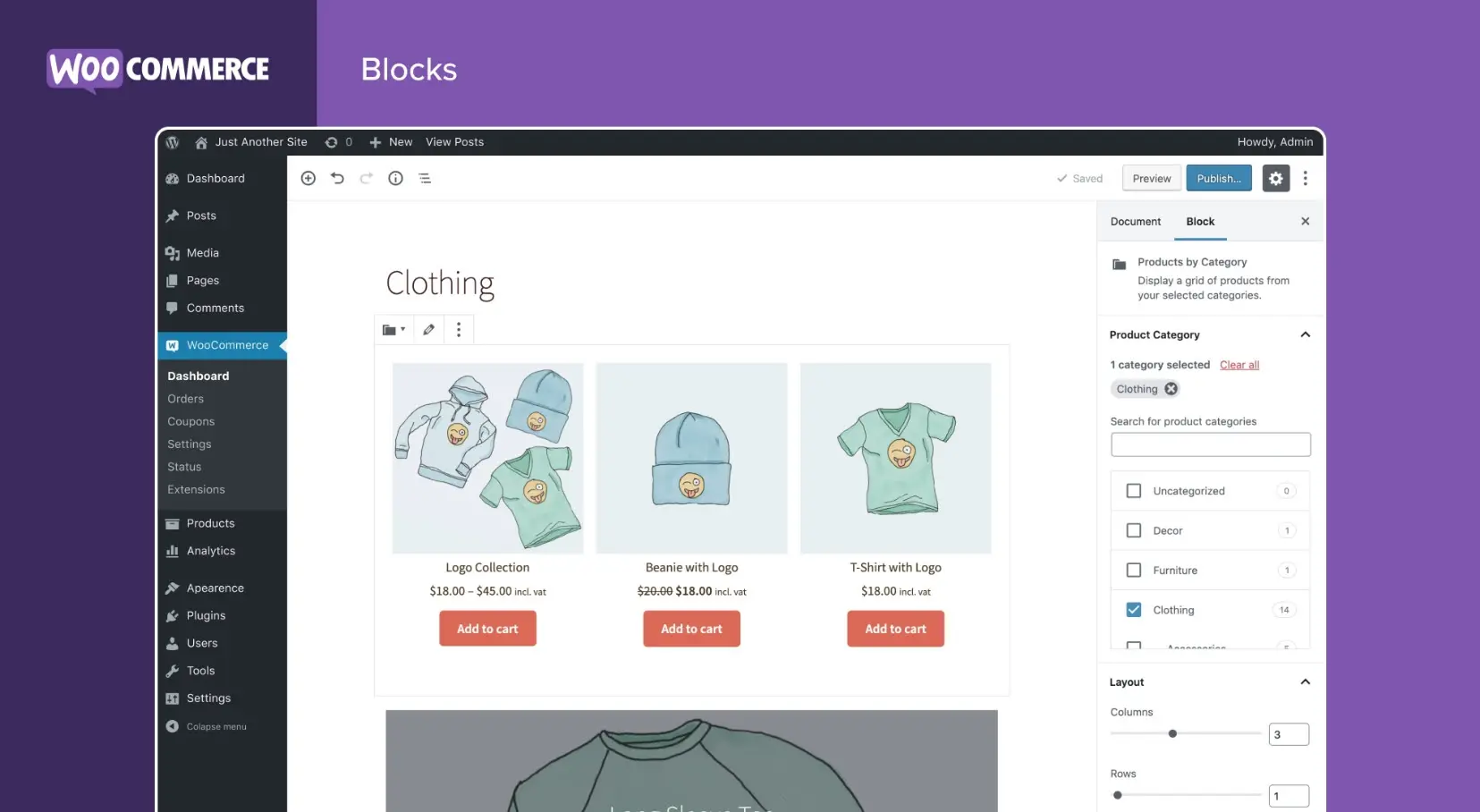
This image is from WooCommerce, taken from https://wordpress.org/plugins/woocommerce/
Product images help sell the product. If you look at an Amazon product, you’ll see images throughout the product description. You’ll also see videos. Sometimes the videos must be clicked to view, while other times they play automatically. This creates a demonstration of the product that gives the customer a visual experience they can’t get without seeing the product in person. Be sure to use great photography and video quality.
For more information about using images, see the article How to Optimize Images for Better Performance.
Include a Call to Action (CTA)
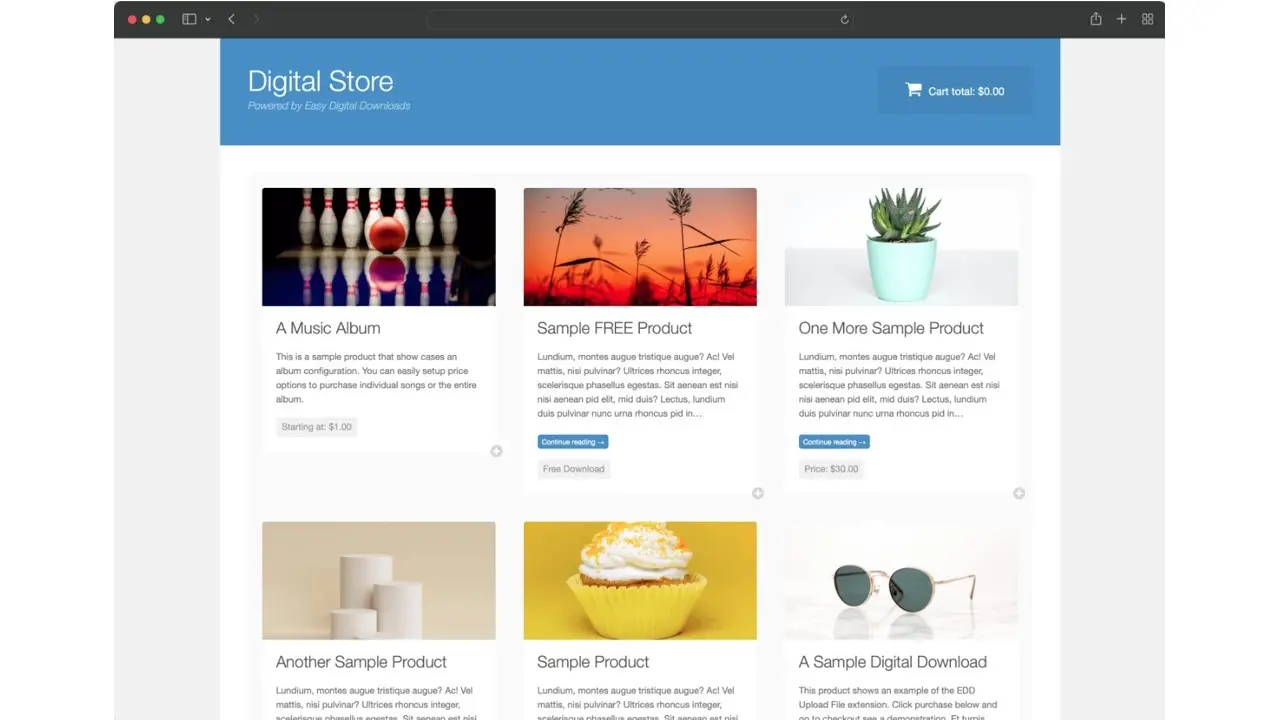
This image is from the Easy Digital Downloads plugin, taken from https://wordpress.org/plugins/easy-digital-downloads/
Once the customer has read or scanned through the product description, they should know what to do next. Converting them from someone browsing to becoming a buyer should be a simple process for them.
Your product description should point the customer in the right direction to make the purchase. This is the call to action (CTA). The CTA could be a button labeled Add to Cart, Learn More, Shop, Call for a Quote, etc. This guides the customer, so they know what to do next. It also entices them further to purchase by making it easy.
For more information about adding a CTA, see the article How to Add a Call to Action Button in WordPress.
Optimize SEO
Many customers will find products through search engines. This means you’ll need to optimize your product description for those search engines. Perform a Google search for your product or similar products to find keywords that match your product. Look at the Google recommendations as you type to see what others are searching for. Also, analyze Google AdSense for keywords to use in your product description.
For more information about optimizing your SEO, see the article 16 SEO Tips for Small Businesses.
Perform A/B Tests
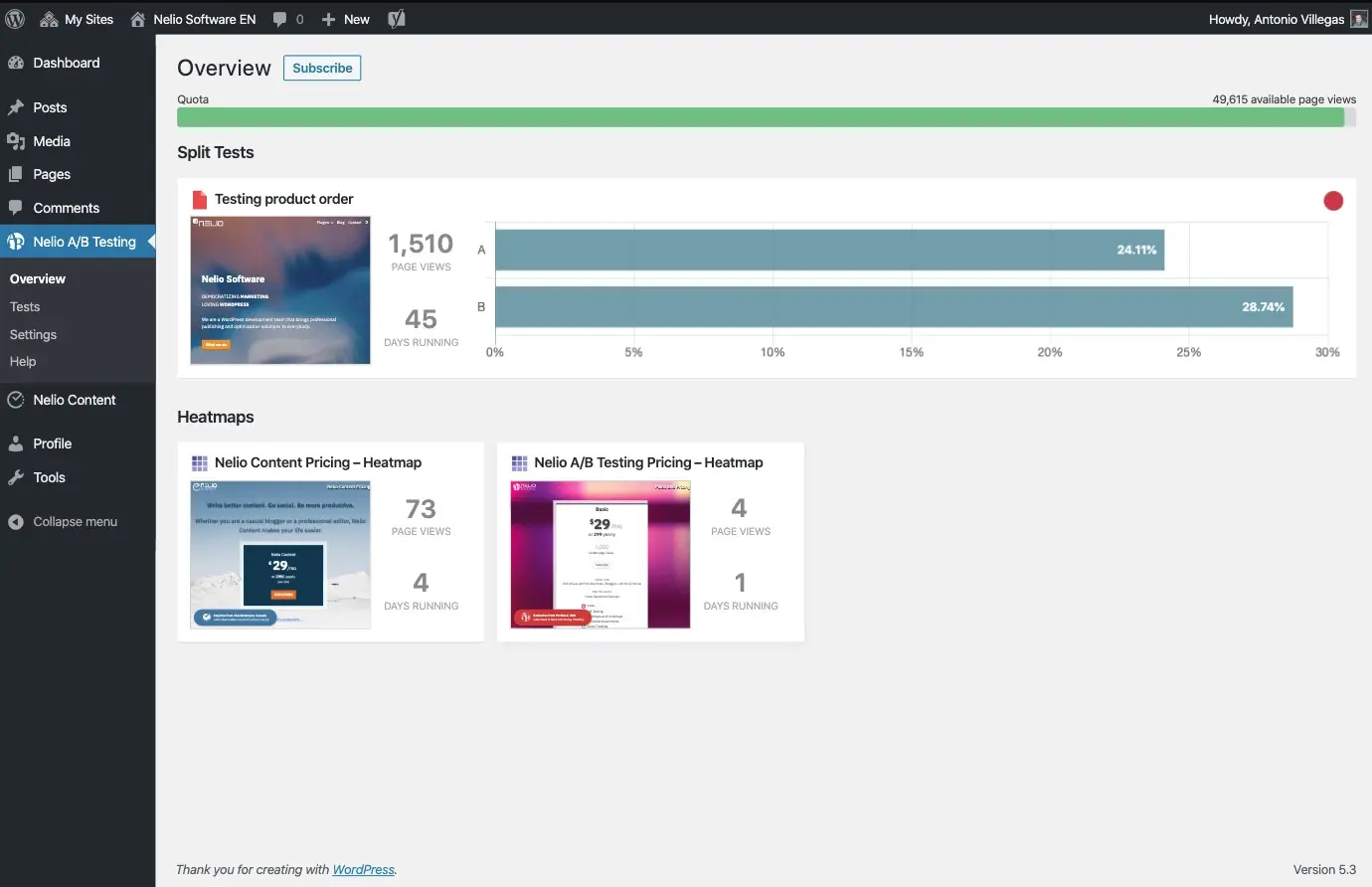
This image is from the Nelio AB Testing plugin, taken from https://wordpress.org/plugins/nelio-ab-testing/
Improve your product description by performing an a/b test. Use the results of the test to know what works and what doesn’t. Test the headings, keywords, images, CTAs, etc. I recommend that you always run a/b tests to improve your content.
For more information, see the article Website A/B Testing.
Ending Thoughts on How to Write a Product Description
That’s our look at how to write a product description to increase your sales. Product descriptions are difficult to write. They require an extensive knowledge of your customers’ needs. Following the tips we’ve included in this post will help you create amazing product descriptions that convert.
We want to hear from you. Have you used any of these tips to write a product description? Let us know in the comments.
Frequently Asked Questions
Can writing product reviews help in gaining backlinks?
Yes, writing insightful product reviews can attract backlinks
How do I add custom product types in my WooCommerce theme?
Add custom product types by extending the product class and templates.
How do digital or online escrow services work for virtual products or services?
They hold digital assets or payments until conditions are met, ensuring both parties' satisfaction.
Can WordPress be used for eCommerce?
WordPress offers many different ways to build an eCommerce online store for all types of products and markets. Almost 40 percent of all online shops are powered by WooCommerce, a WordPress eCommerce plugin.

Randy A. Brown is a freelance writer from east TN specializing in WordPress and eCommerce. He's a longtime WordPress enthusiast and loves learning new things and sharing information with others. If he's not writing or reading, he's probably playing guitar.
View all posts by Randy A. Brown




















